A trip to the Black Forest is never a bad choice. It’s a hiking paradise a few hours’ drive from the Belgian border, full of dense forests, charming towns and even Alpine views in the south. Trot Op! drove all the way there to enjoy the last days of a beautiful lndian summer.
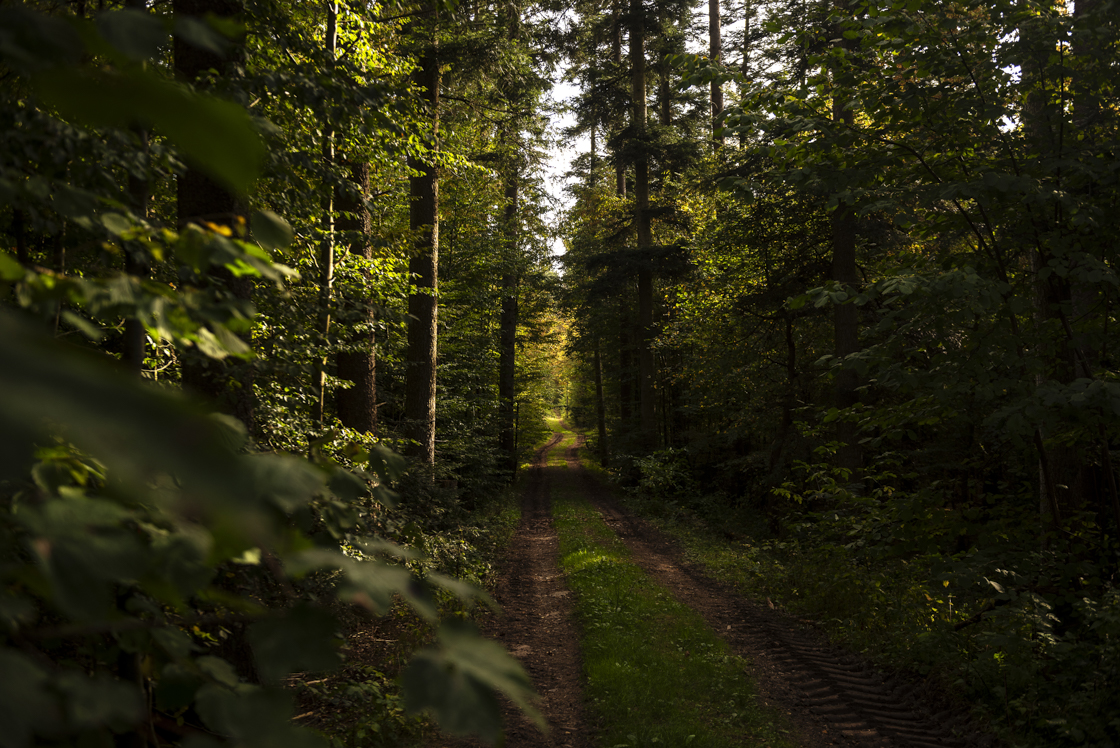
You know what I honestly think is an underrated destination? Germany. Okay, I got tired of the daily cow-sized Schnitzels pretty fast, but otherwise I was more than pleasantly surprised on every trip. All Bundesländer have their own character, there are fantastic city trips to be had and those who get there by car can immediately test how fast it can actually go.* There are also surprising discoveries to be made in terms of nature. Take the Black Forest, for example. Der Schwarzwald is only a six-hour drive from Antwerp and has been one of the country’s most popular holiday regions since forever. You don’t have to be Einstein to see why that is so – he was born nearby by the way, so he knew it himself. The Black Forest is full of traditional cuckoo clock villages; you can dive head first and butt-naked into all kinds of wellness resorts and you can drive from one enchanting landscape to another over endless winding roads – from dense forests and deep valleys to even sunny Alpine meadows. With almost 25,000 kilometres of hiking trails and countless marked routes leading you past the main sights, one could plan some decent hikes here as well. Start polishing those boots.
*Hint: still at least 50 km/h slower than the BMW, Mercedes or Audi impatiently glued to your bumper for the last five kilometres. Keep to the right and keep an eye on your mirrors.
Germany: a road trip to Breisach and the Northern Black Forest
To get to the Black Forest myself, I would first make a small detour. The plan was to enter Germany through France to visit Breisach am Rhein and its French counterpart Neuf-Brisach. These are two exceptional but very different towns, which share a turbulent and centuries-long history. Officially they’re not in der Wald (am I the only one who always thinks it should be das Wald?) but they’re too nice to skip. From Breisach I would traverse the entire wood to drive to Calw and Nagold in the Northern Black Forest. Good for a smooth and varied road trip. And because I simply live to give – eat my dust, Jesus – at the end of this story I will treat you to some other tips I took away from previous trips to the region. Christmas is just around the corner, so I’m getting the presents out of the way. And now, off to Germany it is!
1. Breisach am Rhein: ancient history on a rock
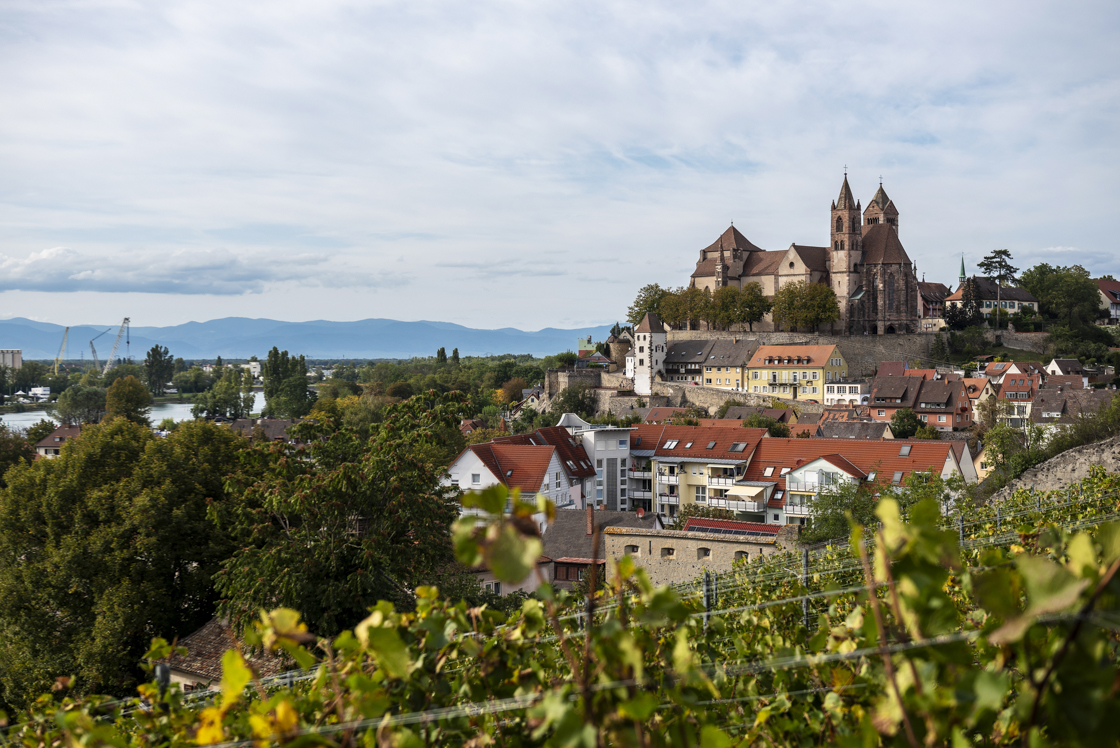
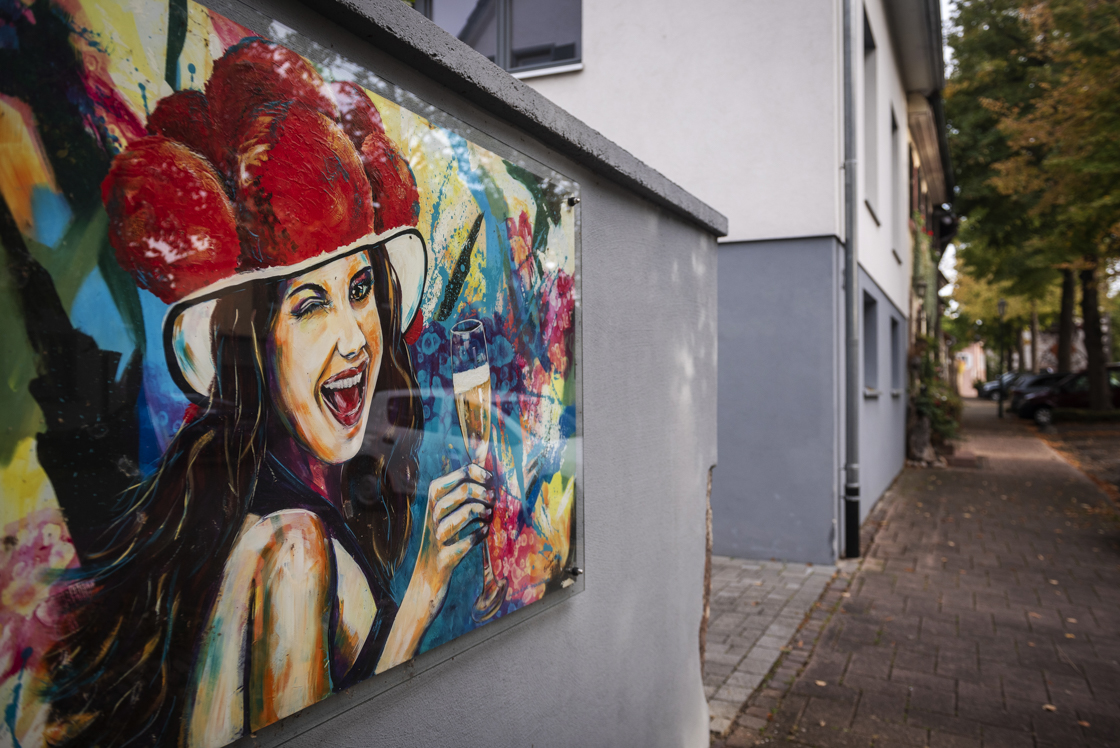
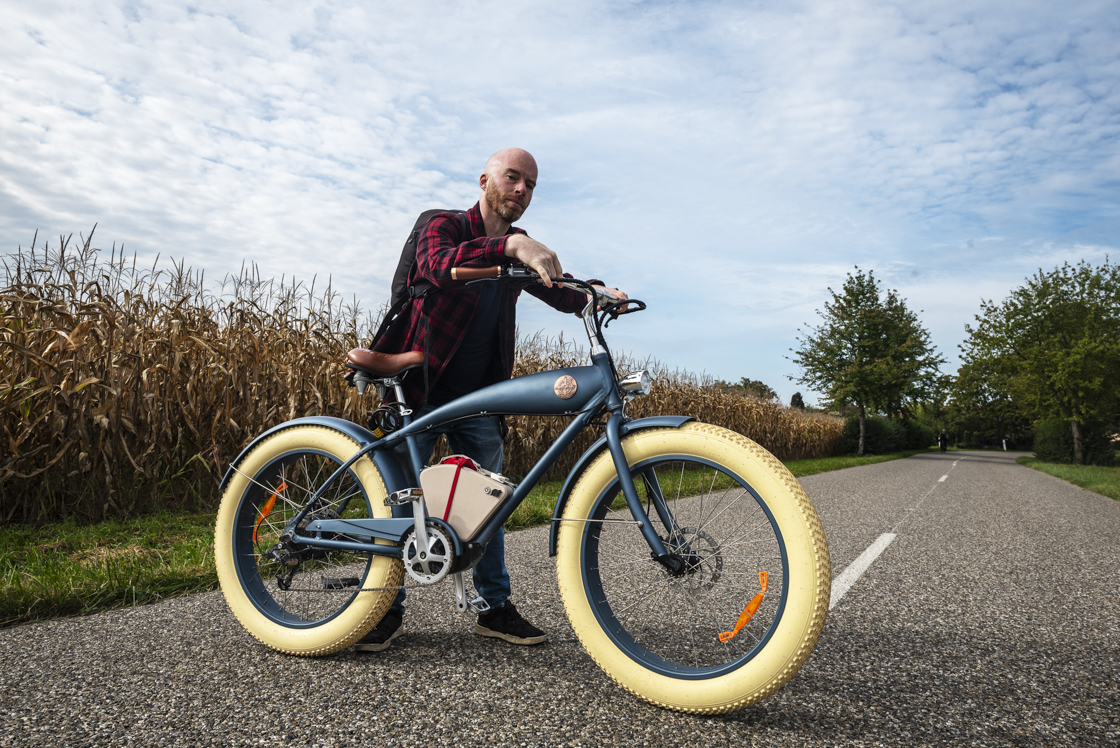
Breisach is – the name kind of gave it away – a typical German town along the banks of the Rhine river. It’s spread out over a high rock that overlooks the surrounding area, and on the other side of the water lies France. For a long time, the Rhine formed the natural border between Louis XIV’s kingdom and the Holy Roman Empire of the Habsburg Emperors, which meant the town changed hands more times than your average Pokémon card. However, Breisach is much older than both France and Germany. The Romans had already noticed the strategic value of this rock formation, and built an army encampment on top of it, the foundations of which are still marked on the current church square. From here, a few thousand legionnaires defended the outer borders of the empire against the Germanic tribes. This was thirsty work, mostly because all of their drinking water had to be carried all the way up from the Rhine. In the Middle Ages, this problem was solved by digging out a deep well and setting up the Radbrunnenturm: a tower acting as a hamster wheel for humans taking the buckets back up. The construction was driven by naughty women (who for example had had the audacity to wear a skirt showing their ankles) who were put to work in their bare bums as punishment, to the delight of the rest of the village – different times indeed. Today, fortunately service pipes have been laid so the local girls can spend their days differently. This is pleasant, because Breisach is a beautiful town full of bars and restaurants, where all roads seem to lead to the large St. Stephansmünster on top of the rock. While walking through the streets, you’ll come across all kinds of local works of art and poems. These are part of der Kunstweg, and when you check them all off, you’ve seen the entire city centre as well. Photogenic place. The most beautiful views can be had from the Eckartsberg surrounded by vineyards or from the large sun lounger in the Franziskaner Klostergarten. www.tourismus.breisach.de
2. The Kaiserstuhl and the Breisach wines
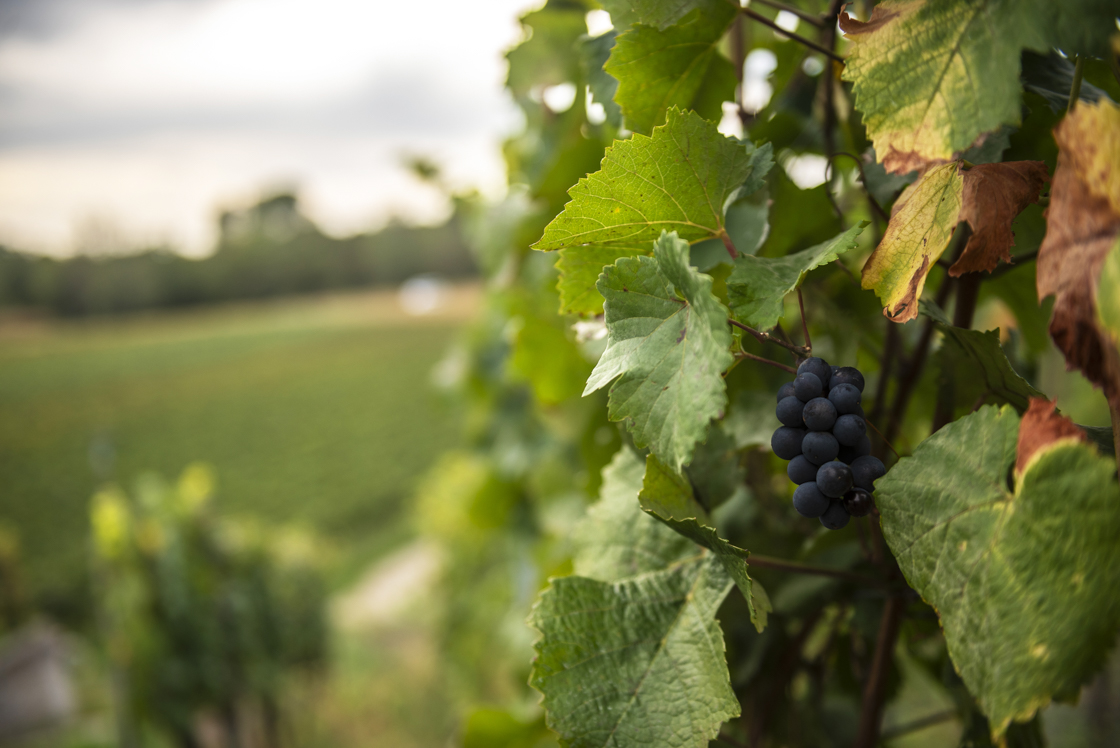
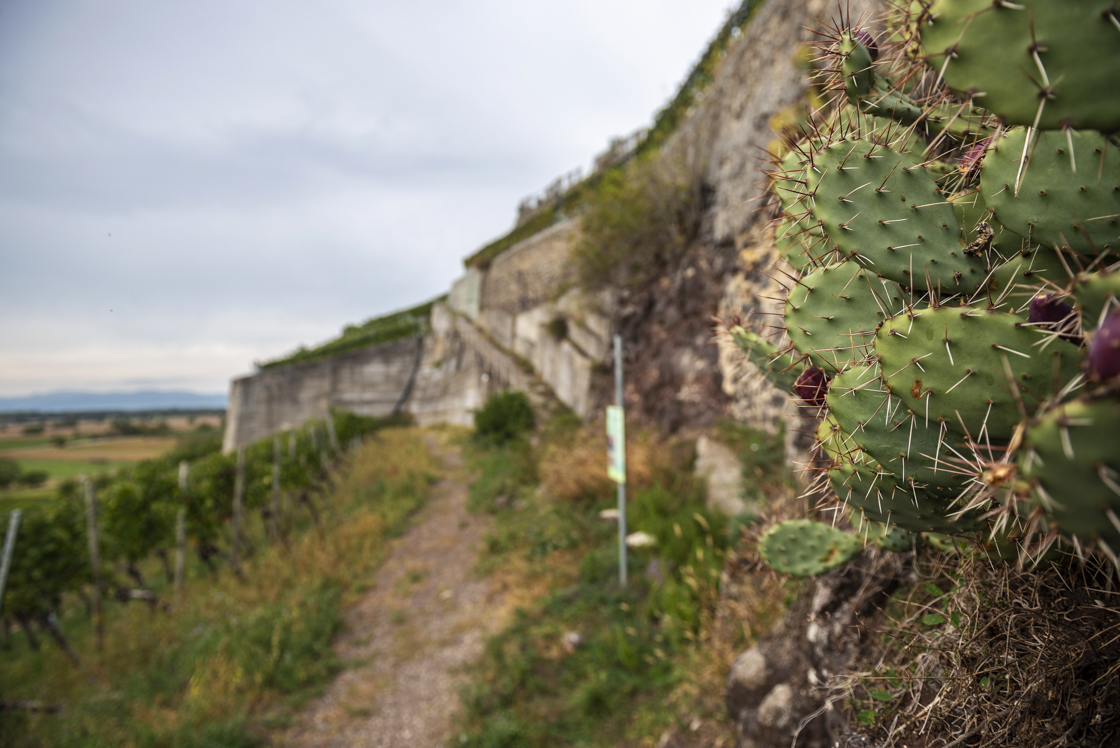
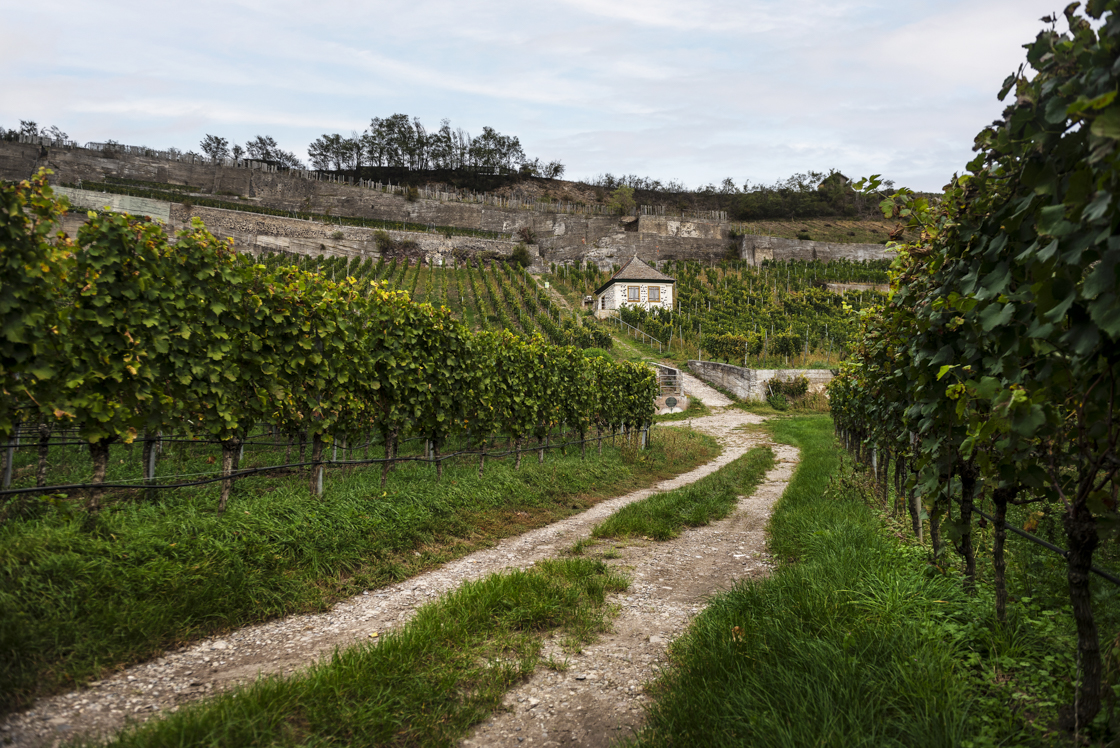
Breisach may not exactly be in the Black Forest, but it’s very close to the Kaiserstuhl. That’s a volcanic low mountain range about fifteen kilometres in length, which for some reason has a completely unique micro climate. As a result, there are still species to be found that used to live in the whole region, but due to the changed temperatures can now only survive here. It has the largest variety of orchids in all of Europe (thirty species), you can see bee-eaters flying around and you can stumble upon lizards and praying mantises that otherwise would only roam in the Mediterranean. I even passed a whole bunch of cactuses. All this makes the Keiserstuhl a very interesting area for hiking, but it’s also ideal for wine growing. A few kilometres outside Breisach, numerous wine terraces were dug out of the slopes, so that you can now walk through a landscape that could just as easily be somewhere in Tuscany. A huge amount of wine is grown in the region. The Badischer Winzerkeller is one of the largest wine producers in Europe, and their cellar/warehouse is located on the outskirts of Breisach. In the middle of the city centre you’ll find the Geldermann Privatsektkellerei, where high-quality sparkling wine has been produced for a few generations. You can book visits as well as tastings. www.geldermann.de
3. Neuf-Brisach: perfect symmetry just across the French border
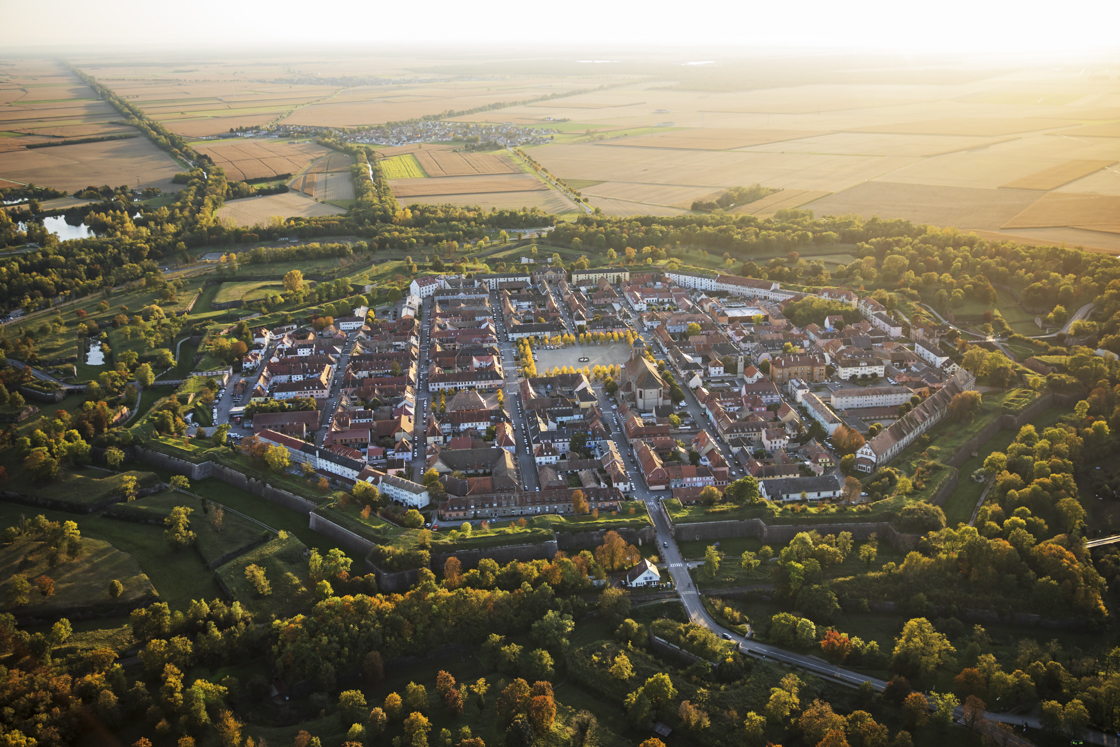
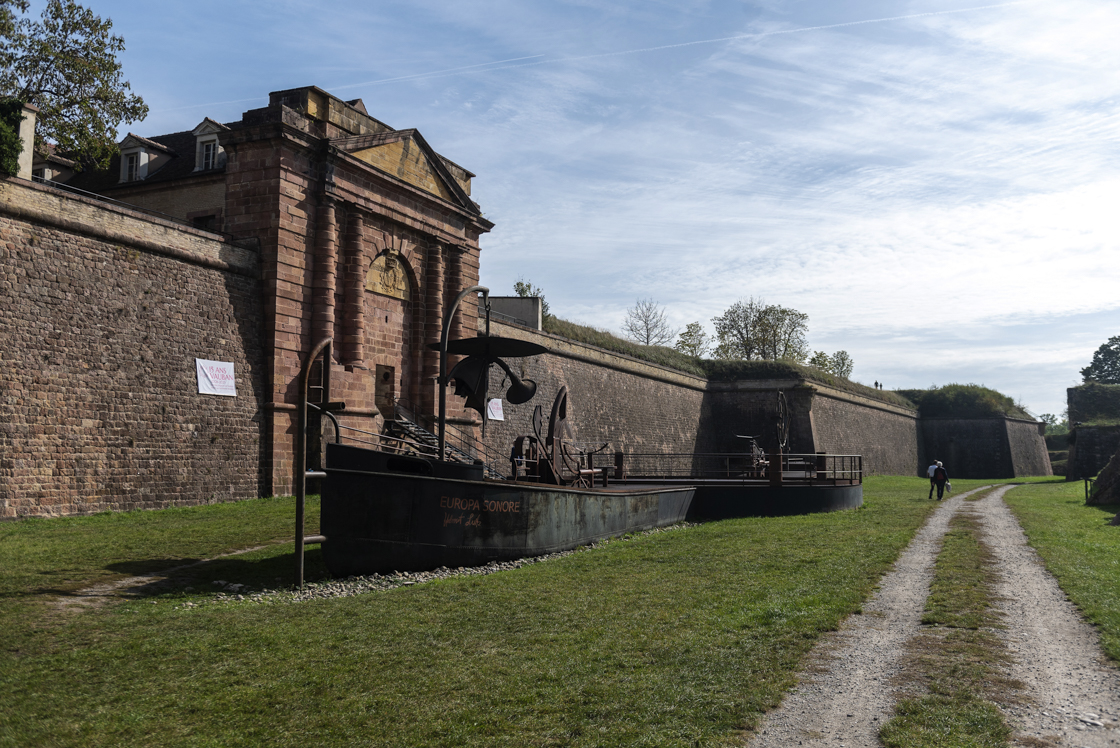
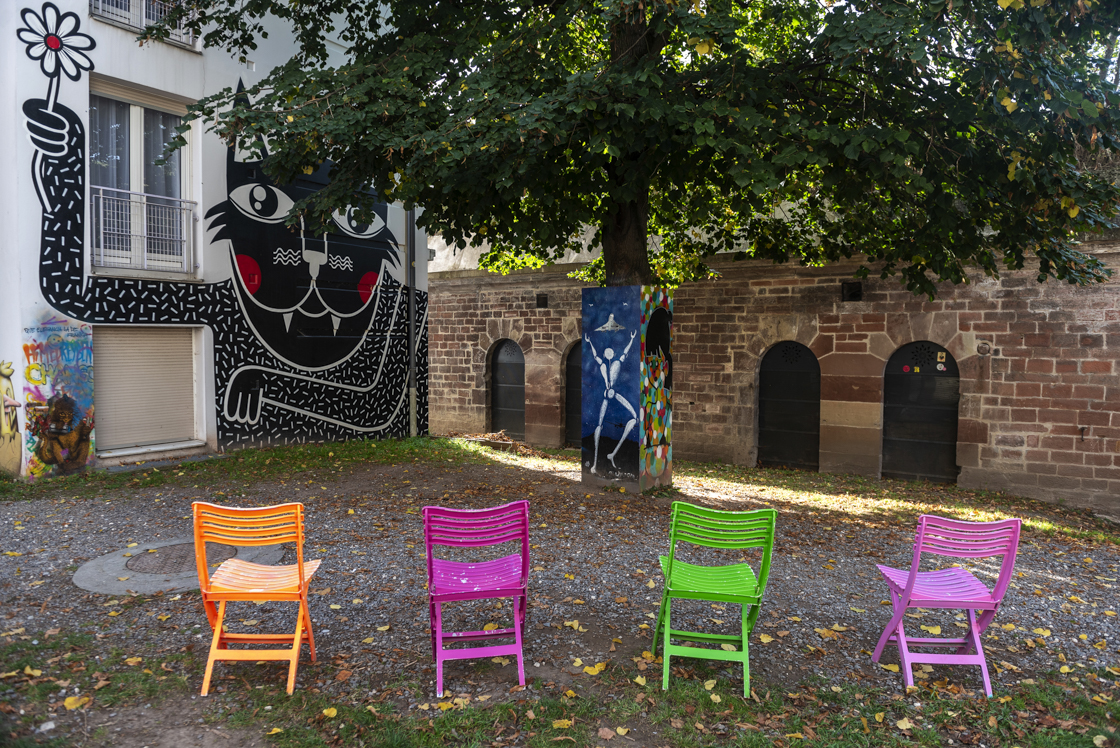
Arial picture made by Tristan Vuano
When the French Sun King Louis XIV had to hand over Breisach to the Habsburgs, it did not go down too well with the poor man. In fact he got so mad about it, he had a new Breisach built just across the Rhine and literally named it Neuf-Brisach. It was drawn up by his loyal architect Vauban who immediately made it his masterpiece. Neuf-Brisach became an impregnable fortress surrounded by several monstrous ramparts in a perfect star shape. Ideal for filling the gap in the French defensive line, and close enough to the original city to keep an eye on the Germans and occasionally present them with a well-aimed cannonball. Today, Neuf-Brisach is a UNESCO World Heritage Site and a tourist attraction. The ramparts are still intact, and now you can freely walk on and through them. The difference in atmosphere with the city on the other side is very striking. In Breisach everything feels quintessentially German, while here you walk through a typical French town full of bakeries and colourful sun shades. The streets are all perpendicular to each other (useful for rifle volleys) and are centred around a large square. Vauban has his own museum here, and every summer the Remp’Art Festival is organized, inviting artists to exhibit their works around the walls. A lot of the art is permanent. www.visitalsacerhinbrisach.com
4. MAUSA Vauban: street art in the catacombs
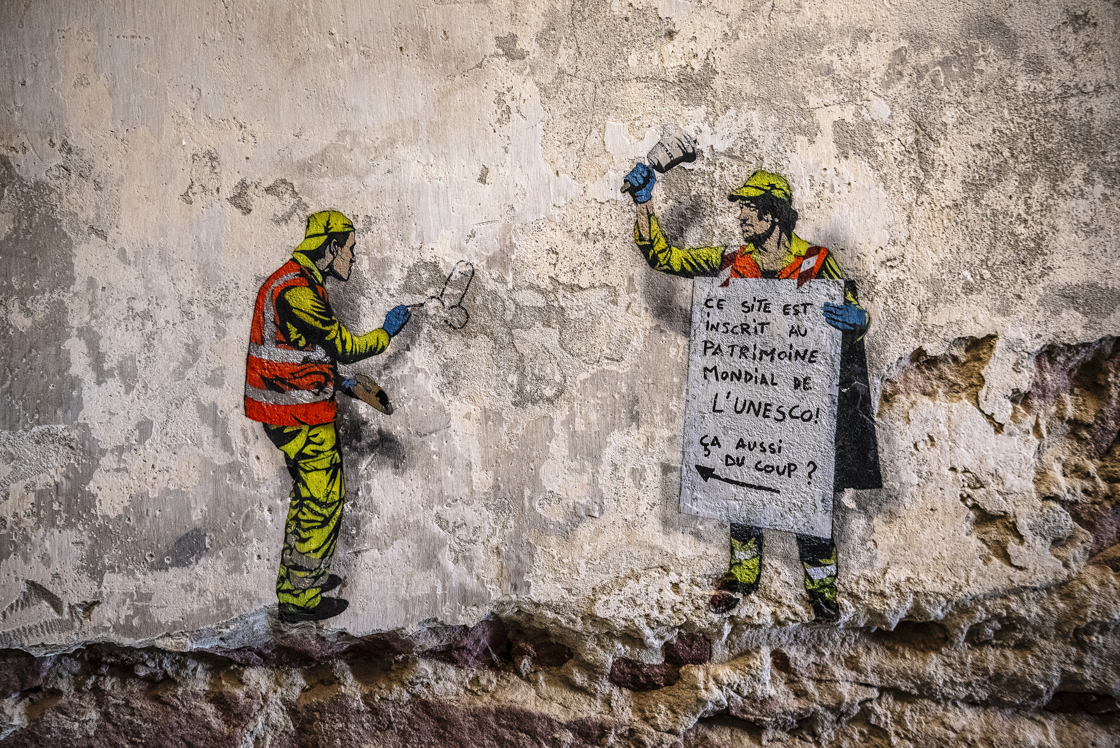
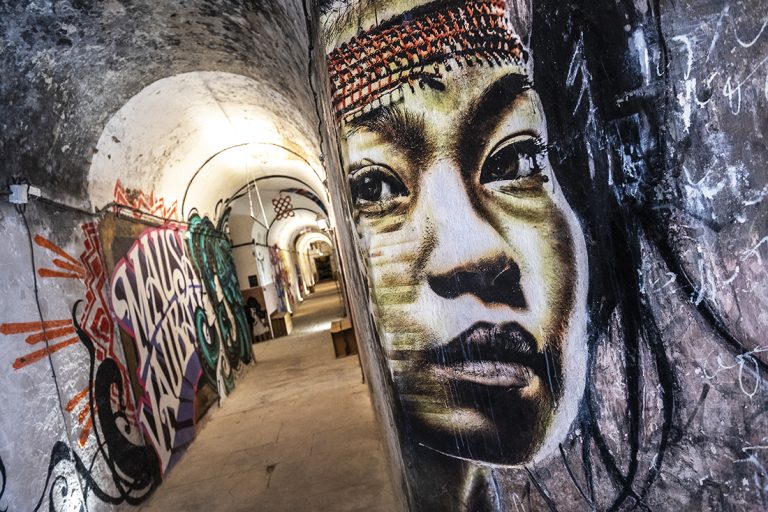
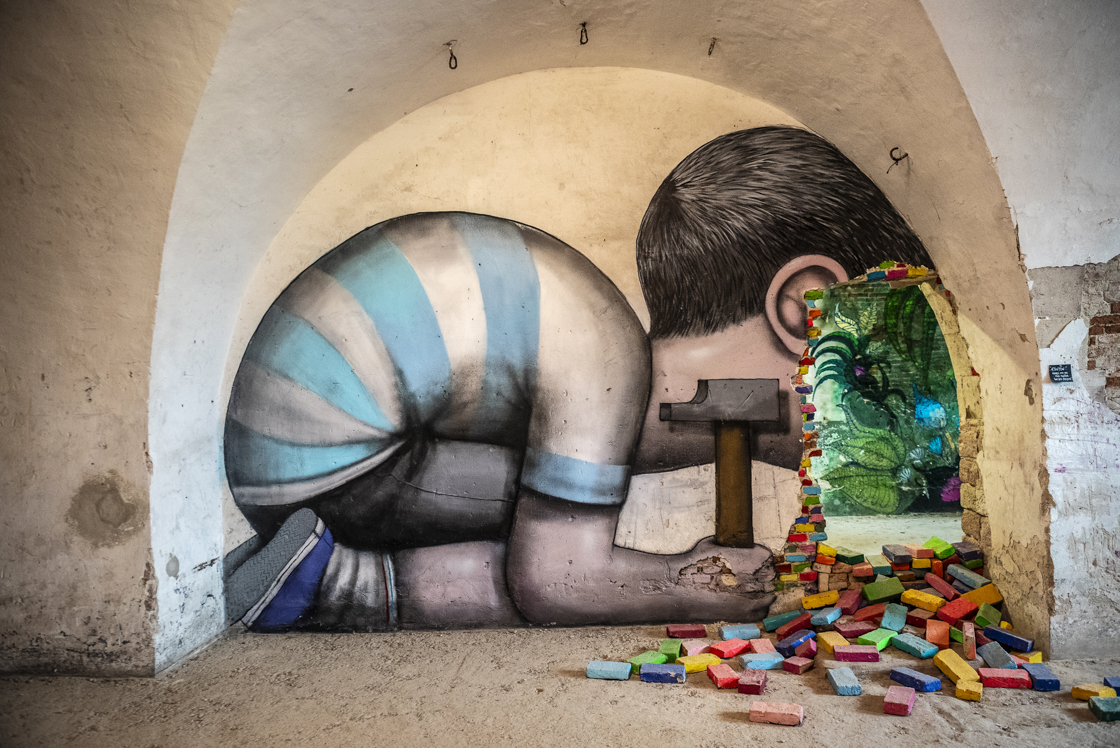
Despite its predominantly military-strategic origin, Neuf-Brisach is a very pleasant town. Apart from the more obvious cafés and museums, an extra surprise was added to the offer a few years ago. In the catacombs of the inner city walls, they opened the MAUSA Vauban in 2018. This is a street art museum for which a ton of international artists were invited to cover more than 1.200 square meters of corridors, walls and vaults. The result is one of the most unreal museums in the genre. Inside a centuries-old UNESCO World Heritage site, dozens of modern artworks are now on display. There are a number of beautiful and thought-provoking specimens among them, but also a few that make fun of the situation. Even Vauban himself was immortalized. They are expanding too. MAUSA on the Bitche (no joke) was opened in the citadel of a town with the same name near Strasbourg. I’m always in for a good word joke. www.mausa.fr
5. Calw: a Schwarzwald town from a picture book
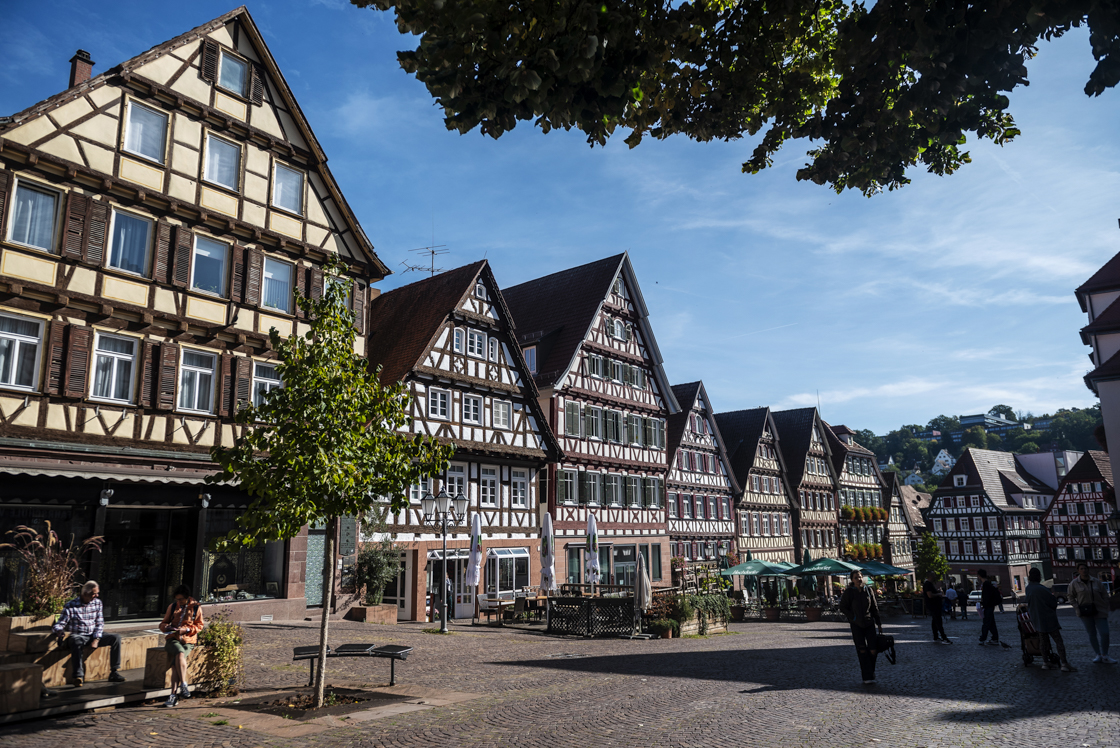
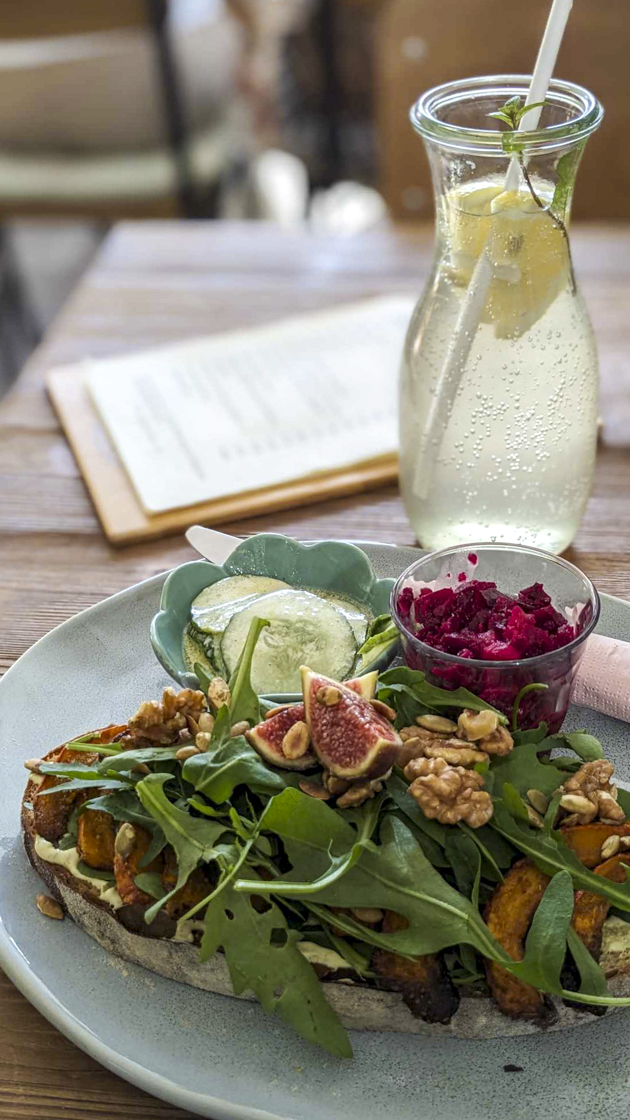
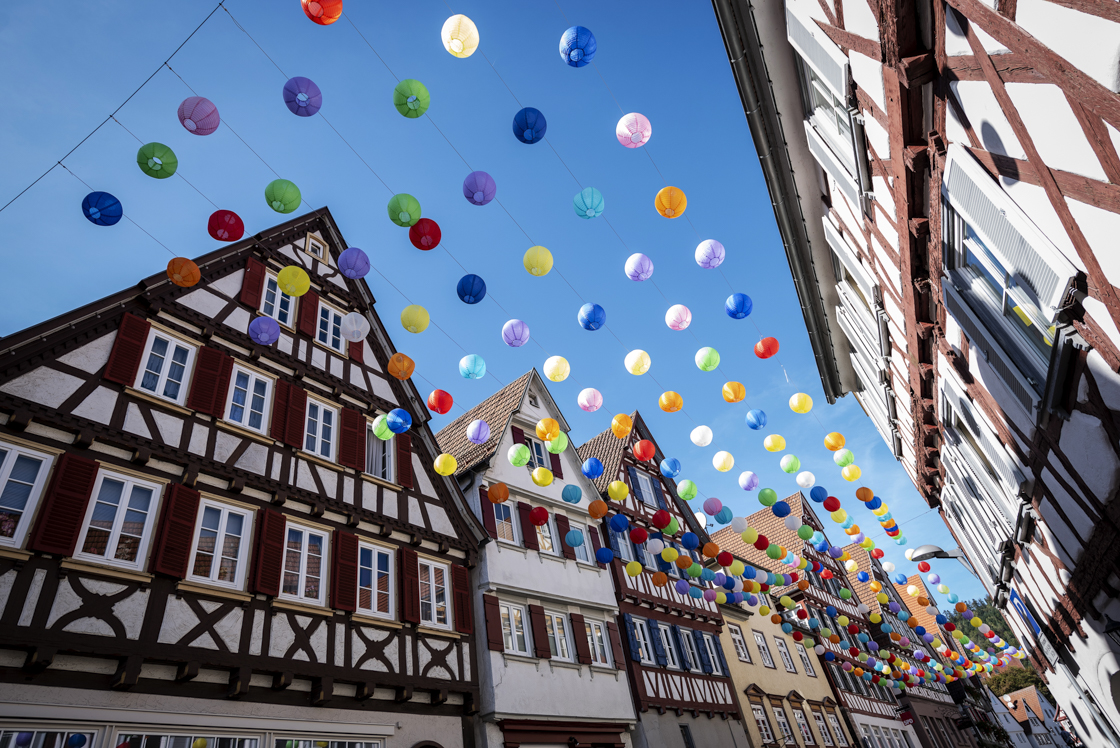
From Breisach it’s about a two-hour drive to Calw, and the last hour led me over winding roads through the forest. Calw is one of the most photogenic towns in the northern Black Forest, and has a centre full of colourful Fachwerkhäuser. These are the houses with the characteristic criss-cross wooden beams in the façade. Now they’re popular attractions, but at the time the much simpler-looking stone houses were those of the actual rich people, given they were significantly less likely to catch fire whenever the neighbour left his Bratwürste on the fire for too long. Calw was also home to writer and Nobel Prize winner Hermann Hesse, who got his own museum here as well as a statue on the bridge he used to walk over on his way to the bar. Very nice city for a visit, full of hidden corners, cool shops and a beautiful large central market. I had lunch at Café Goldmund. Despite the somewhat traditional name, this is quite a hip veggie lunch bar. In this part of Germany, being able to get the occasional light lunch is a treat in itself. If you want to go for the traditional German fare, but in a rather crazy setting, you have to book a table at Krabba-Nescht a few kilometres outside the city in a suburb. This is a popular restaurant that looks like a giant wooden bird house. They give you extremely generous portions here: don’t order too greedily or you’ll regret it. www.cafe-goldmund.de
6. Enjoy some peace and quiet in Klosterruine Hirschau
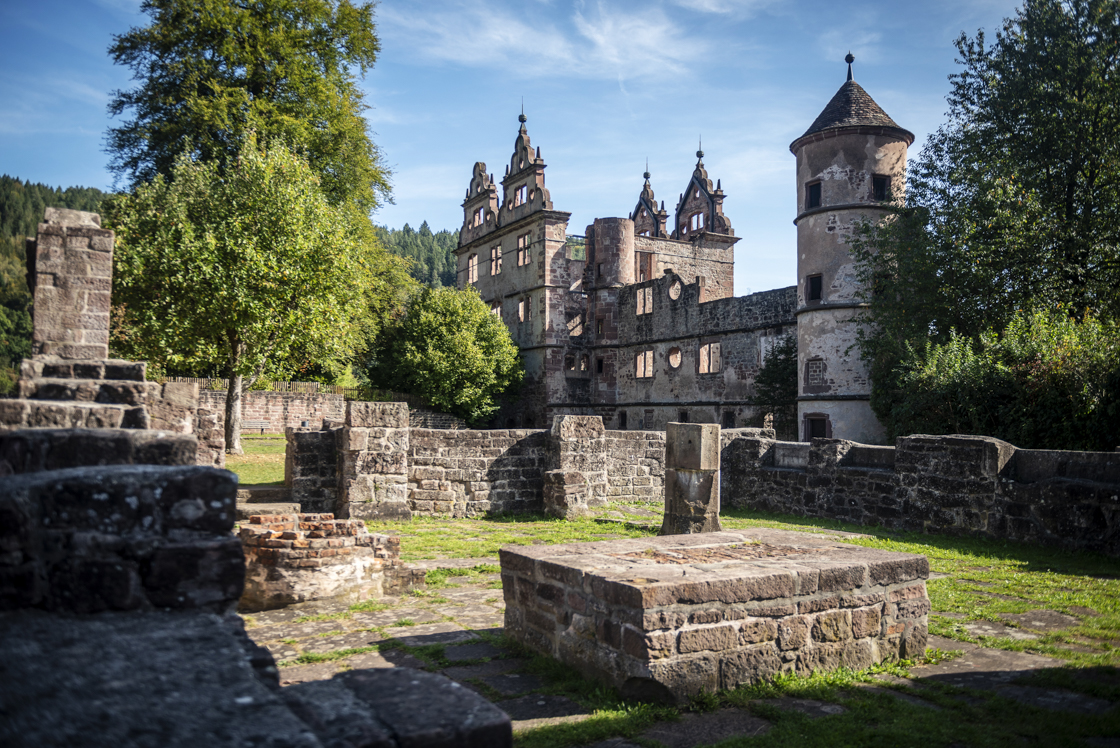
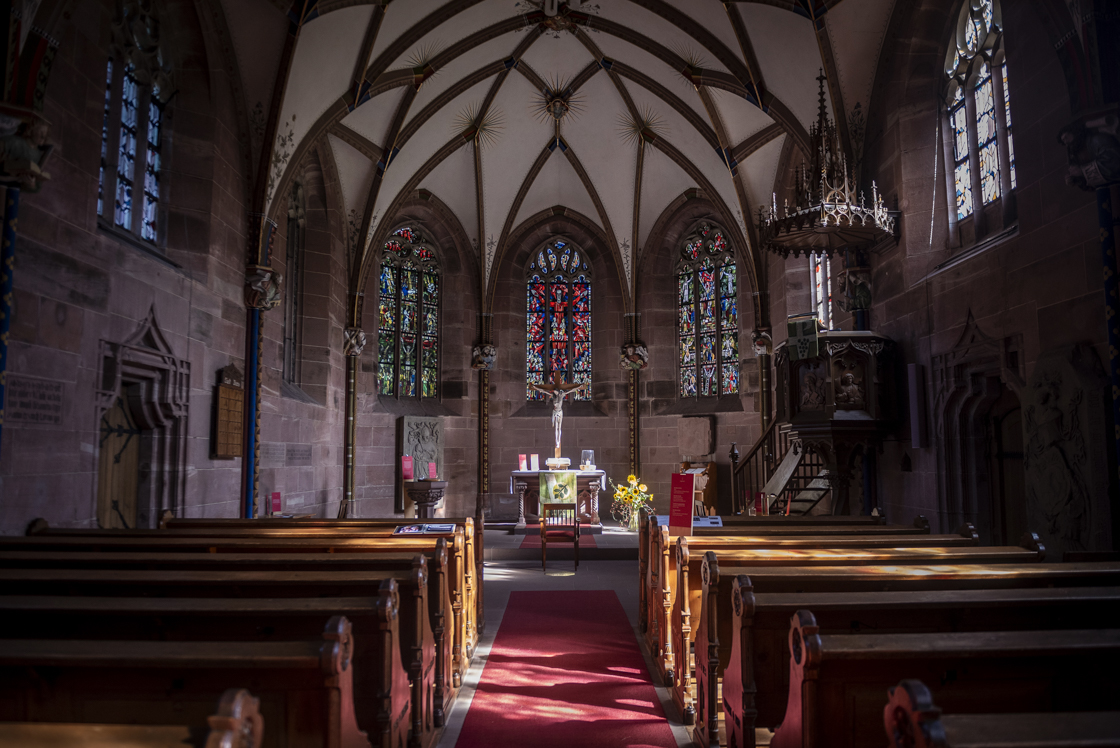
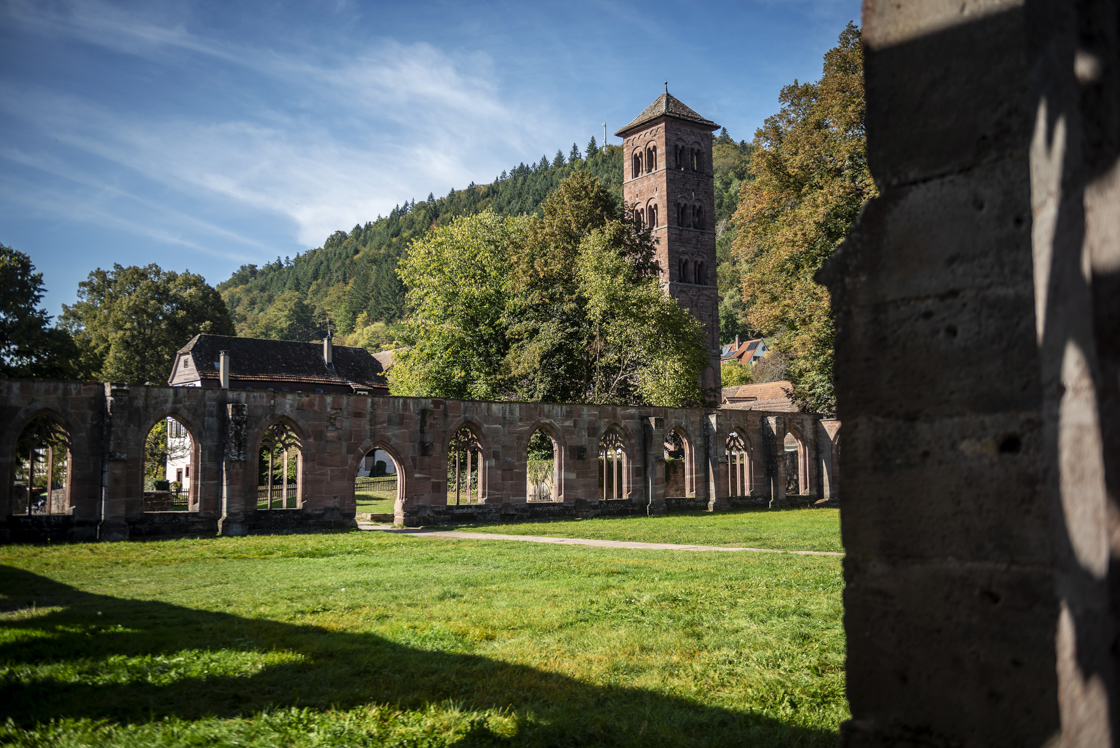
Calw’s most spectacular attraction can be found a few kilometres outside the city: the ruins of the Hirschau Monastery. This was once one of the most important Benedictine monasteries in Germany, but it was unfortunately razed to the ground at the end of the 17th century during the nine-year war with France (that damned Louis XIV again) which – together with a few lost Irishmen – thought it a good idea to fight most of the rest of Europe at the same time. The monastery was never rebuilt, but the ruin still stands and is a relaxing place to visit. Anyone who walks through the remnants can still see the foundations of the central church hall and the columns that held the vaults upright, and immediately understands how impressive it must have once been. A museum about the site was opened in one of the restored buildings and one much smaller church is still active. Concerts and performances are also regularly held here. Unfortunately, that was not the case during my visit, but in the shadow of the ruins I did find Café im Kloster: a coffee bar with a sunny terrace where I pushed a large piece of cake into my gob. Not bad either. www.cafeimkloster.com
7. Nagold: fun on the water and in the tree tops
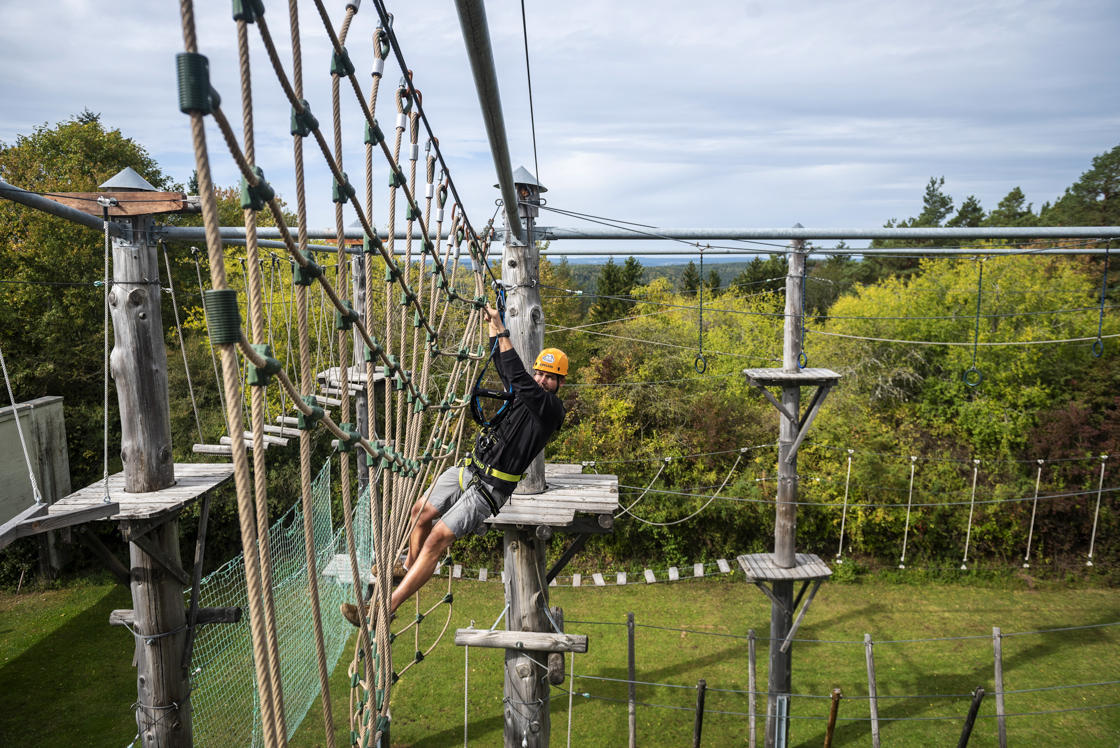
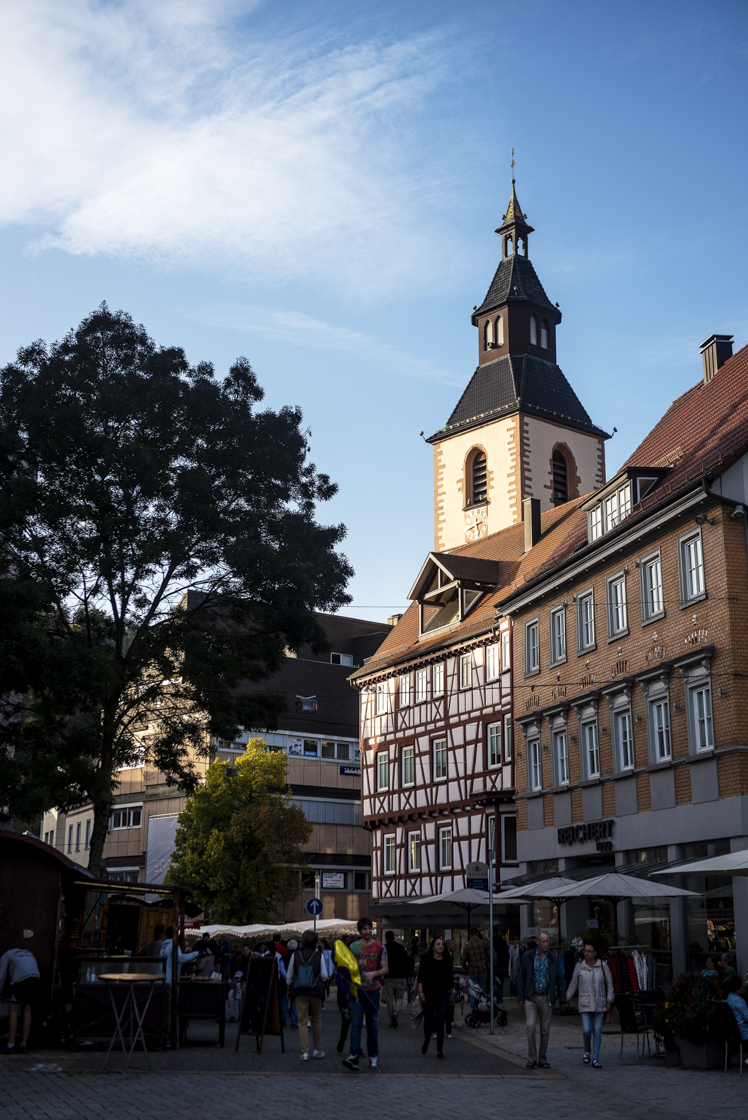
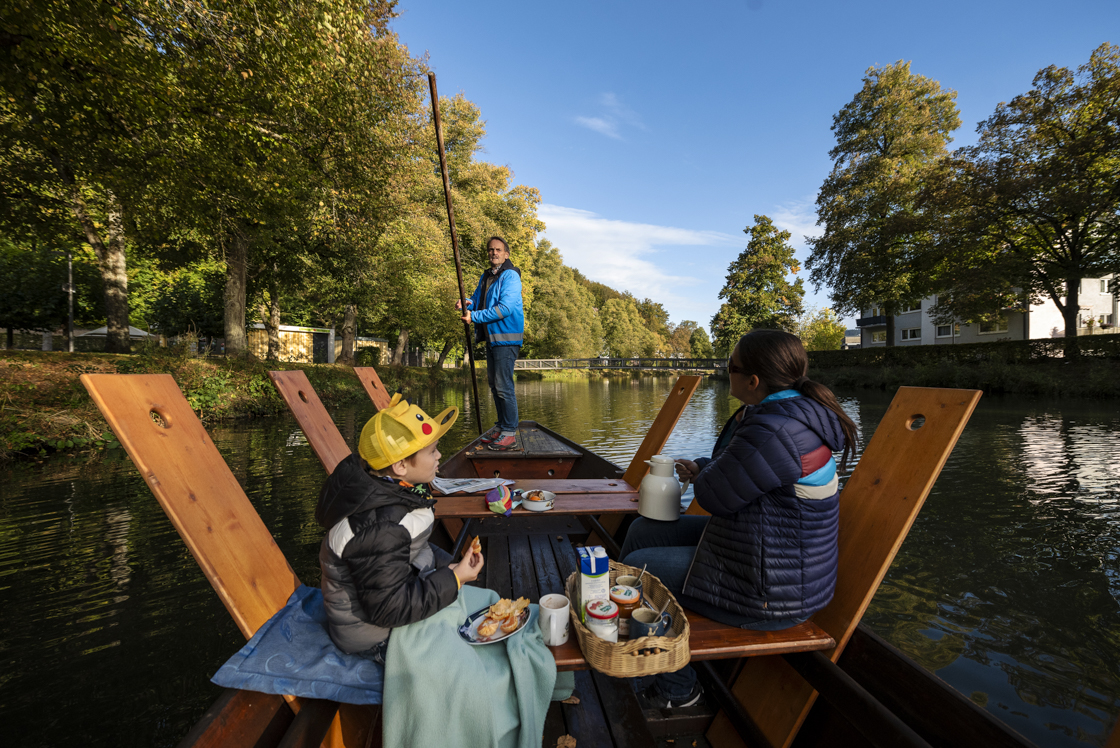
Nagold is another pleasant town half an hour’s drive from Calw. Here too the centre is quite lively and you can see Fackwerkhäuser here and there. Nagold lies surrounded by forest along the river of the same name and is best known for the huge traffic viaduct that runs in a large arch right over it. My morning started brightly in a park along the riverbank, where Ulrich serves as the local gondolier. To make the whole thing less awkwardly romantic, the man had also brought his daughter, grandchild, a breakfast and a guitar along, and it soon became very cosy. If you walk up the hill through the forest from this park, you will arrive at Hohennagold Castle after a short but hefty climb. From here you’ll have a beautiful view of the entire city and the forest around it. Away from the city, you’ll find the Hochseilgarten Nagold, where you can take on all kinds of rope and plank courses at ten or more meters above the ground. From down below it looked quite doable, but once I felt the depth beneath me call out while standing on one of the shaky platforms, I almost pooped my pants. Bad time to rediscover that slumbering fear of heights, but quite exciting nonetheless. Those who like to keep their feet on the ground can also do some axe throwing or archery here. But that would be chickening out a bit, now wouldn’t it? www.stocherkahn-nagold.de www.hochseilgarten-nagold.de
8. Bad Wildbad, Baiersbronn and Schonach
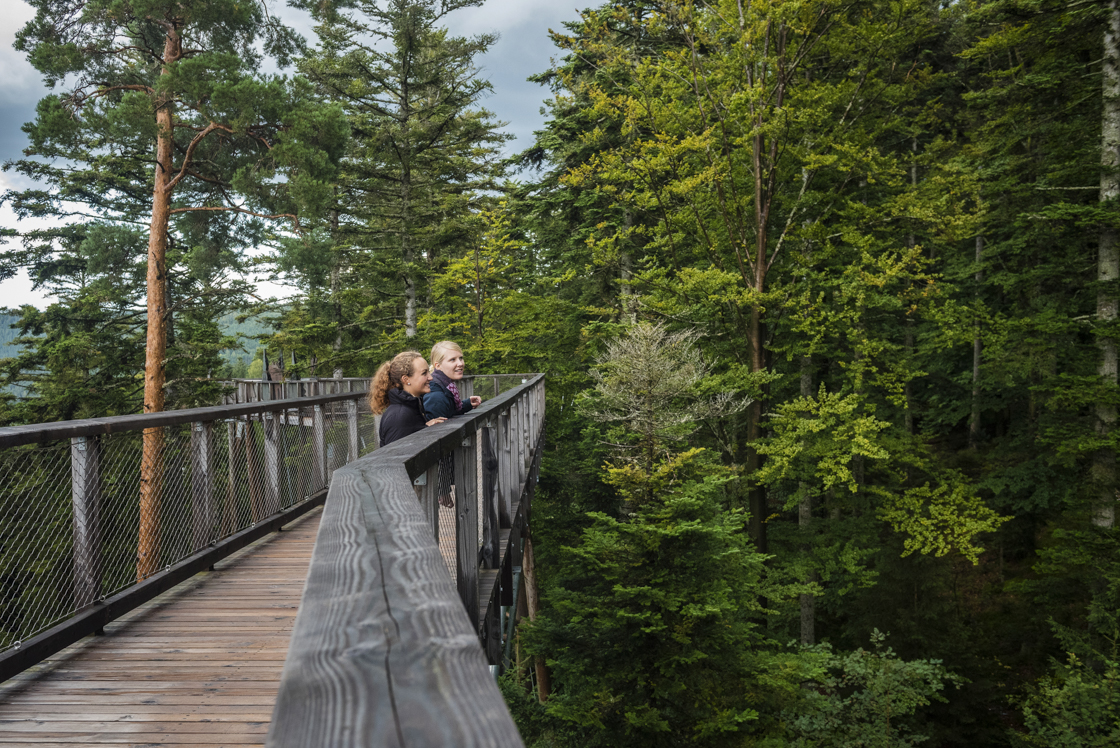
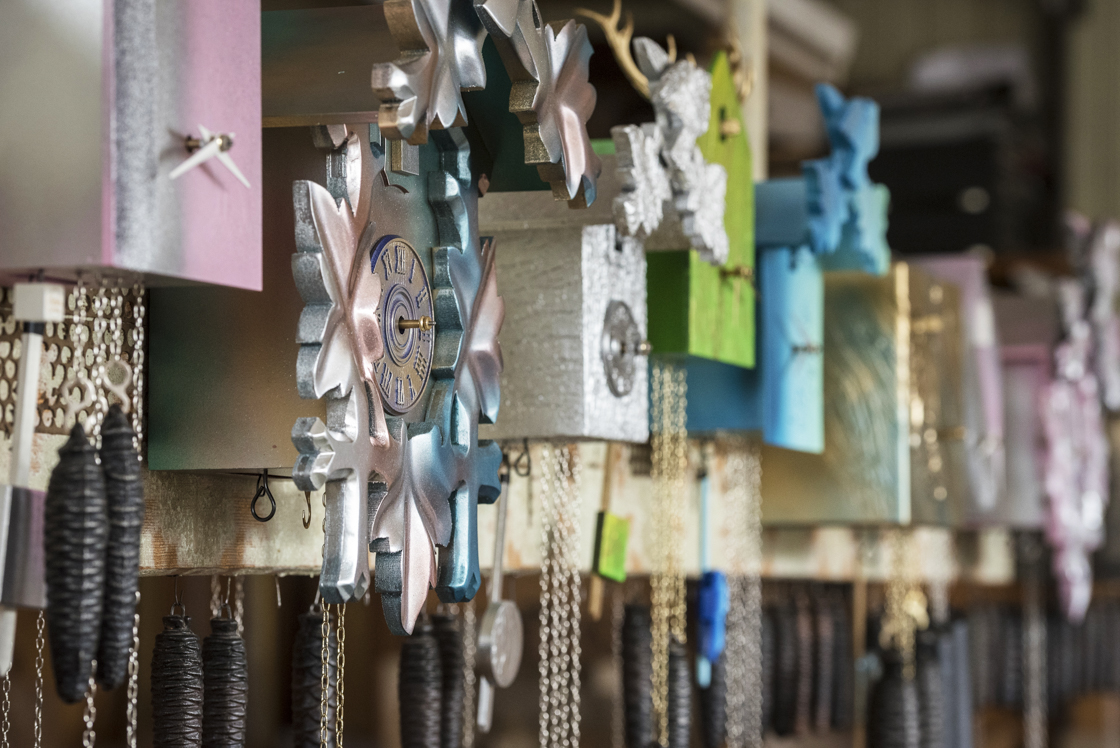
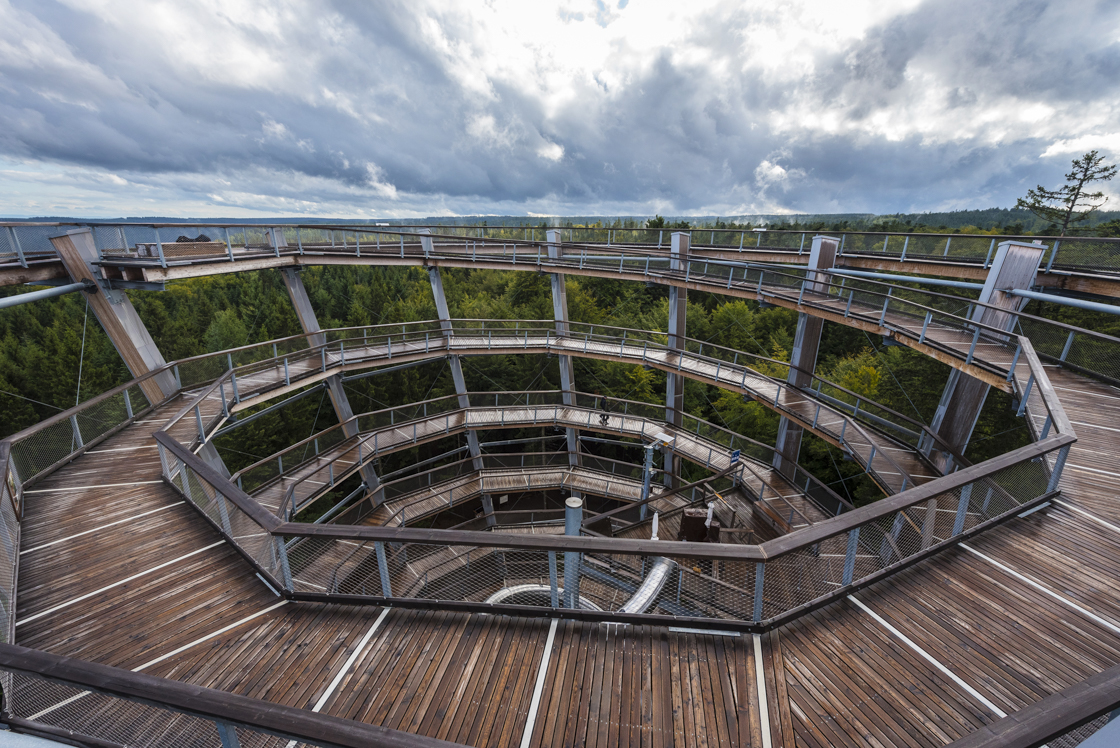
Finally, as promised, I’ll leave you with three more places I didn’t visit on this trip, but passed through a few years ago and are in the area. Bad Wildbad is a spa town with a sprawling wellness centre that looks like a Roman bathhouse in places, and where grannies with neither clothes or shame will strike up a conversation with you as you frantically look around to find something to focus on that isn’t a breast. You can also walk a few hundred meters through the treetops via the Baumwipfelpad here, to finally arrive at a circular wooden tower from which you can see half the Black Forest. Baiersbronn is a tiny town that is secretly the capital of German gastronomy. When I was there in 2017 they had two 3-star and one 2-star restaurant. Unfortunately, I didn’t get to eat in any of them but they’re there for you to try if you feel hungry. Schonach on the other hand, is the birthplace of the German cuckoo clock. The most crazy and modern examples are handmade at Rombach & Haas. One of them still decorates my living room wall. Angela Merkel used to order her state gifts here. Putin for example, once received a beautiful red clock with a black German eagle on it. Perhaps that’s where the whole mess started.
Hotels in the Black Forest and extra info
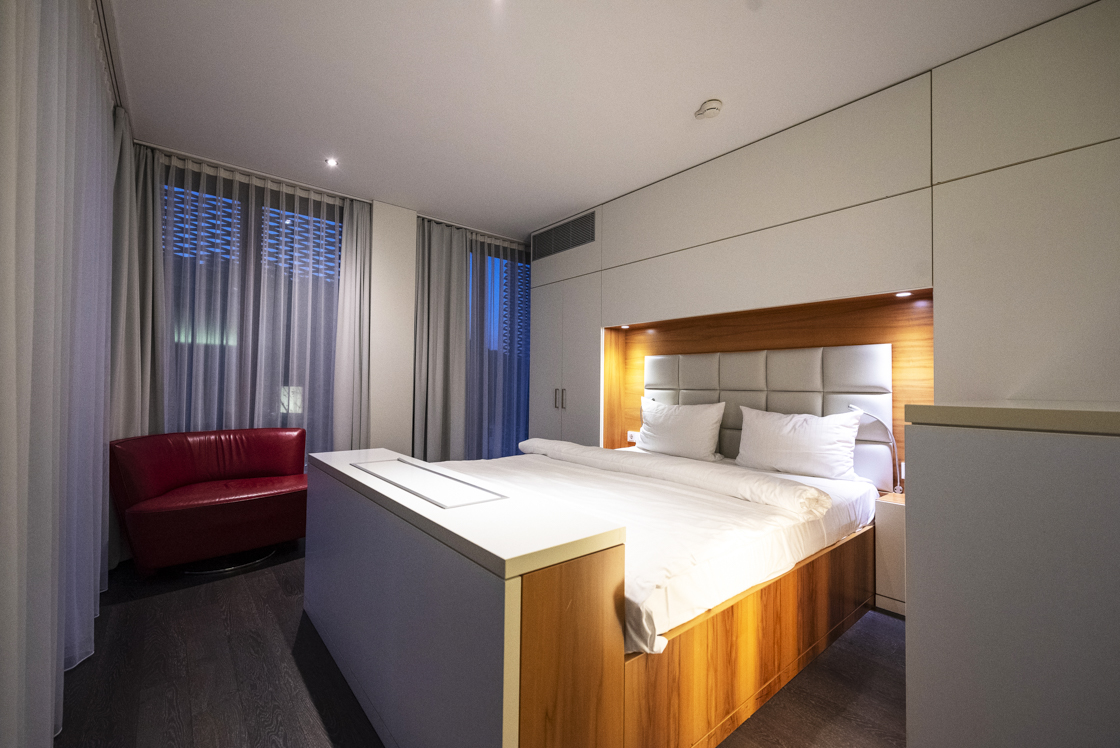
In Breisach, I stayed in Hotel Stadt Breisach for two days. It’s located right next to the Munster at just about the highest point in the city. Its restaurant has a large outdoor terrace with a beautiful view over the Rhine. www.hotelstadtbreisach.de
The next two nights I slept at Hotel Ibis Styles Schwarzwald in Nagold. This is the largest hotel in the city, and can be found on the edge of the old town. It has quite a hip vibe and they put me in a nice corner room with large windows all around.
This article was created with the help of a number of partners.
For more information about Baden-Württemberg as a tourist destination, surf to: www.tourismus-bw.de.
For more info on Breisach: www.tourismus.breisach.de.
For additional tips about the Black Forest: www.mein-schwarzwald.de.
Fancy another German trip? Read all about Dresden and click here and here for my bike ride along the Elbe. Want to explore other European cities? Read my stories about Warsaw, Oslo, Porto, Riga and Vilnius.














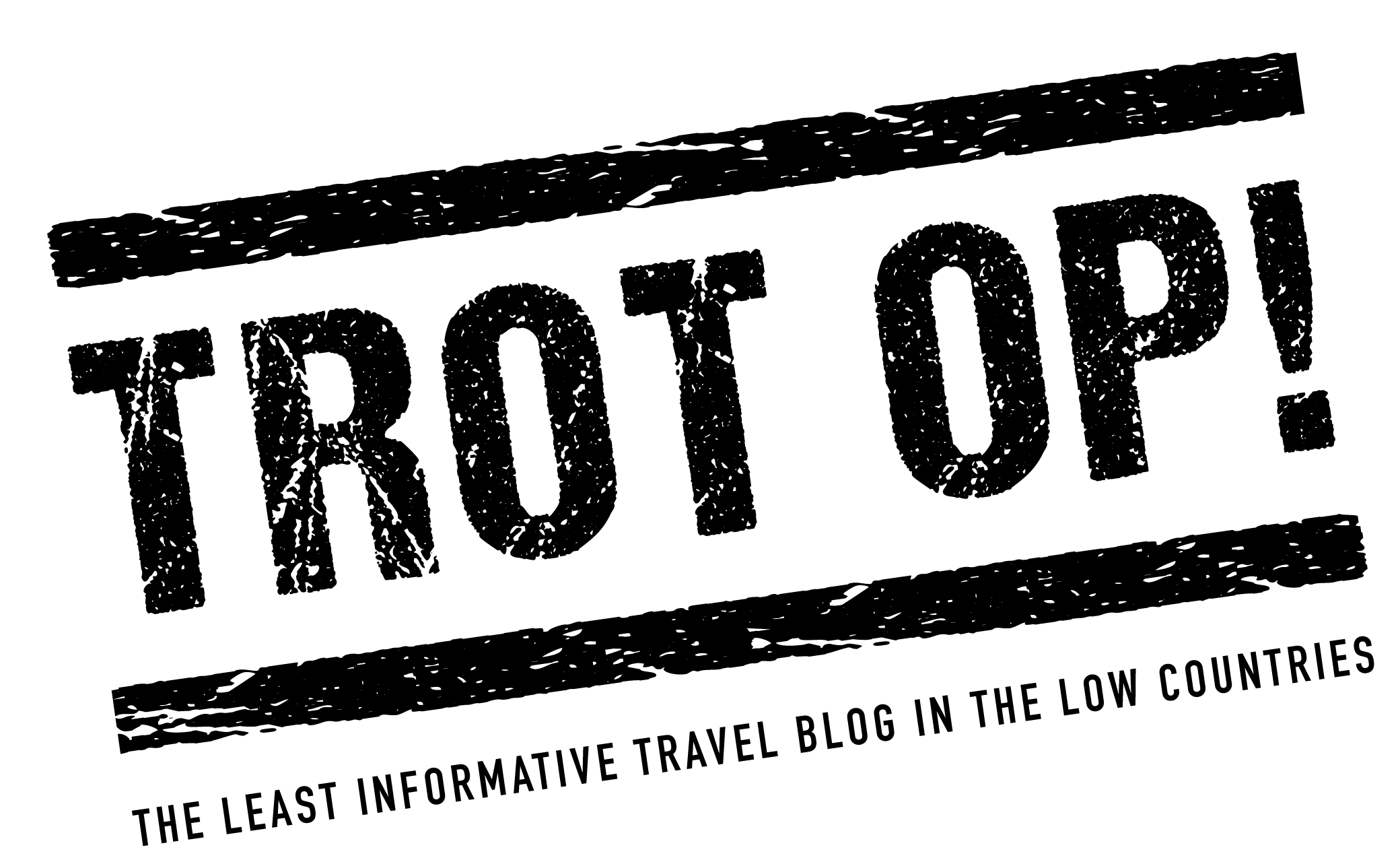
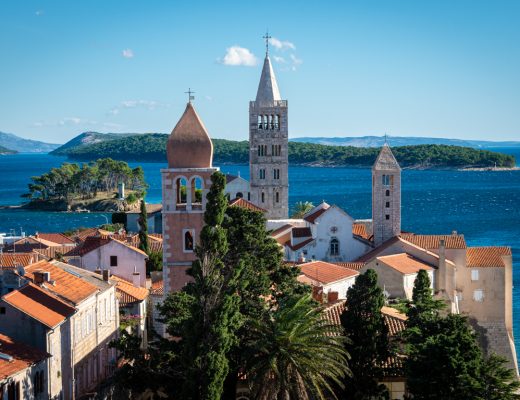
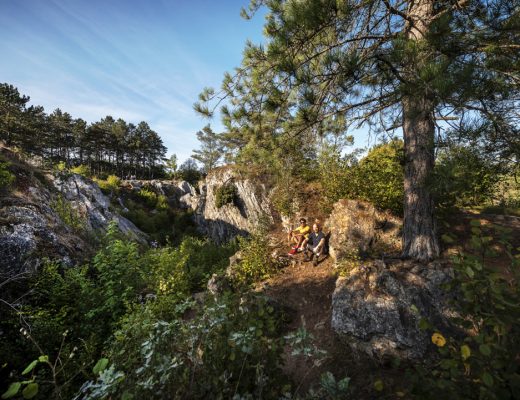
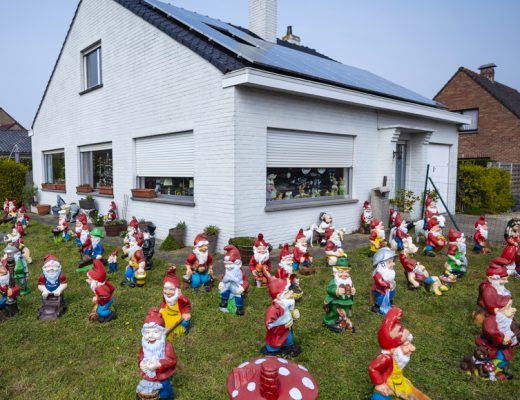

No Comments